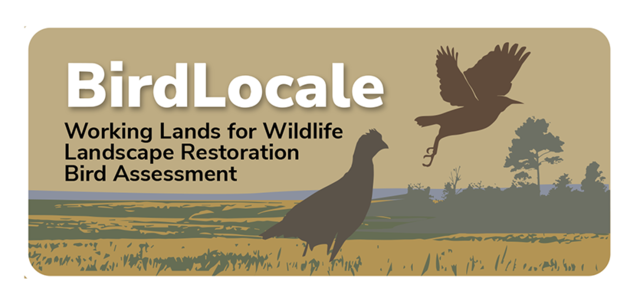-
National Wetlands Inventory
-
by
Web Editor
—
published
Feb 29, 2012
—
last modified
Nov 12, 2013 04:03 PM
—
filed under:
Website,
Wetlands,
GIS,
Links,
Science and Research Products
The National Wetlands Inventory Program has been producing wetland maps and geospatial wetland data for the United States since the mid-1970s. The focus of the program has been to map or prepare digital databases to deliver to the public, as well as project and report on national wetland trends using a probability-based sampling design.
Located in
Planning In Practice
/
Conservation Planning Projects
-
NatureServe
-
by
Web Editor
—
published
Mar 01, 2012
—
last modified
Nov 12, 2013 04:03 PM
—
filed under:
Website,
Network,
Links,
Science and Research Products,
Ecosystems
NatureServe represents an international network of biological inventories-known as natural heritage programs or conservation data centers-operating in all 50 U.S. states, Canada, Latin America, and the Caribbean. The network not only collects and manages detailed local information on plants, animals, and ecosystems, but develops information products, data management tools, and conservation services to help meet local, national, and global conservation needs.
Located in
Planning In Practice
/
Conservation Planning Projects
-
NatureServe Climate Vulnerability Index
-
by
Web Editor
—
published
Mar 01, 2012
—
last modified
Nov 12, 2013 04:03 PM
—
filed under:
Website,
Climate Change,
Science and Research Products,
Links
The NatureServe Climate Change Vulnerability Index can help identify plant and animal species that are particularly vulnerable to the effects of climate change.
Located in
Planning In Practice
/
Conservation Planning Projects
-
SAMAB - Southern Appalachian Man and the Biosphere
-
by
Web Editor
—
published
Mar 09, 2012
—
last modified
Nov 12, 2013 04:03 PM
—
filed under:
Conference,
Website,
Science and Research Products,
Links
The SAMAB program is a public/private partnership promoting the environmental health and stewardship of natural, economic, and cultural resources in the Southern Appalachians. Data is available from the Western North Carolina Vitality Index: http://www.wncvitalityindex.org
/download
Located in
Planning In Practice
/
Conservation Planning Projects
-
Southeast GAP Analysis Project
-
by
Web Editor
—
published
Mar 01, 2012
—
last modified
Nov 12, 2013 04:03 PM
—
filed under:
Website,
Links,
Science and Research Products
The Southeast Gap Analysis Program provides data and assistance for regional assessments of the conservation status of native vertebrate species and natural land cover types and facilitates the application of this information to land management activities.
Located in
Planning In Practice
/
Conservation Planning Projects
-
Southern Forest Futures Project
-
by
Web Editor
—
published
Feb 29, 2012
—
last modified
Nov 12, 2013 04:03 PM
—
filed under:
Website,
Forests,
Links,
Science and Research Products
This multi-year research project forecasts changes in southern forests between 2010 and 2060
Located in
Planning In Practice
/
Conservation Planning Projects
-
The Nature Conservancy's Climate Wizard
-
by
Web Editor
—
published
Mar 01, 2012
—
last modified
Jan 14, 2021 08:35 PM
—
filed under:
Website,
Climate Change,
Science and Research Products,
Links
Climate Wizard enables technical and non-technical audiences alike to access leading climate change information and visualize the impacts anywhere on Earth. The first generation of this web-based program allows the user to choose a state or country and both assess how climate has changed over time and to project what future changes are predicted to occur in a given area.
Located in
Planning In Practice
/
Conservation Planning Projects
-
USGS GAP Analysis Program
-
by
Web Editor
—
published
Mar 01, 2012
—
last modified
Nov 12, 2013 04:03 PM
—
filed under:
Website,
Links,
Science and Research Products
How well are we protecting common plants and animals? Gap Analysis is the science of answering this question. Developing the data and tools to support that science is the mission of the Gap Analysis Program.
Located in
Planning In Practice
/
Conservation Planning Projects
-
West Virginia GIS Clearinghouse Application
-
by
Web Editor
—
published
Mar 01, 2012
—
last modified
Nov 12, 2013 04:03 PM
—
filed under:
Website,
GIS,
Science and Research Products,
Links
A statewide landscape integrity model was developed as part of the on-going assessment of natural habitats by the West Virginia Division of Natural Resources.
Located in
Planning In Practice
/
Conservation Planning Projects
-
Planning in Practice: Map Products
-
by
Web Editor
—
published
Nov 12, 2013
—
last modified
Dec 10, 2014 04:37 PM
The Appalachian LCC has designed multiple static foundational maps for viewing and download. In addition, you may also view map products which were produced from AppLCC or partner funded projects such as Eastern Brook Trout Joint Venture. These maps are often constructed with new data and may serve as a launching point for your exploration of these data products.
Located in
Planning In Practice


